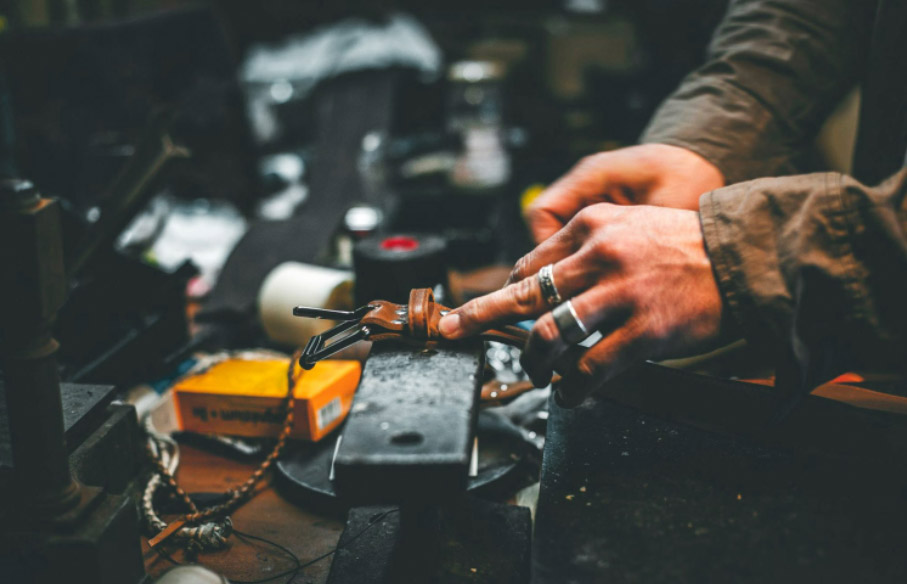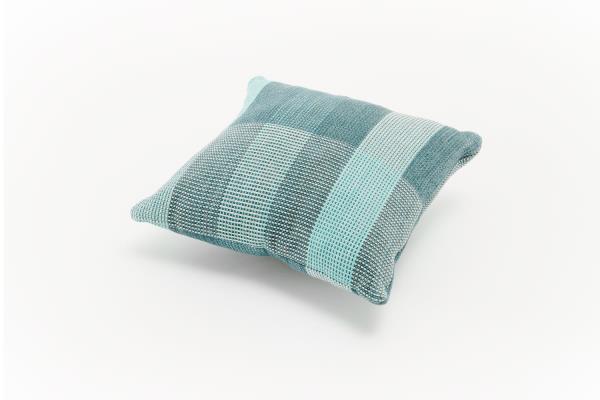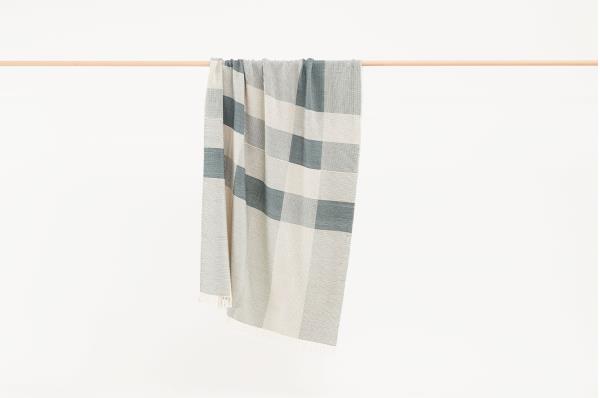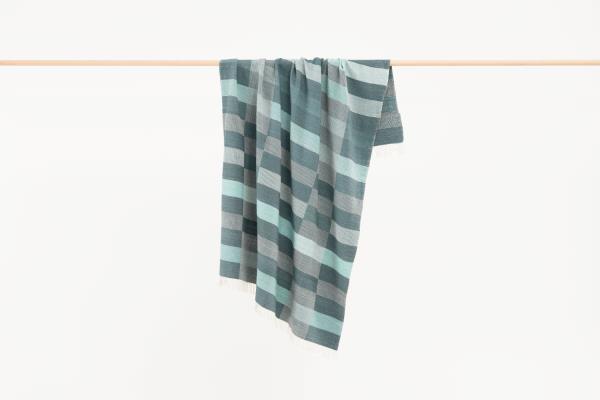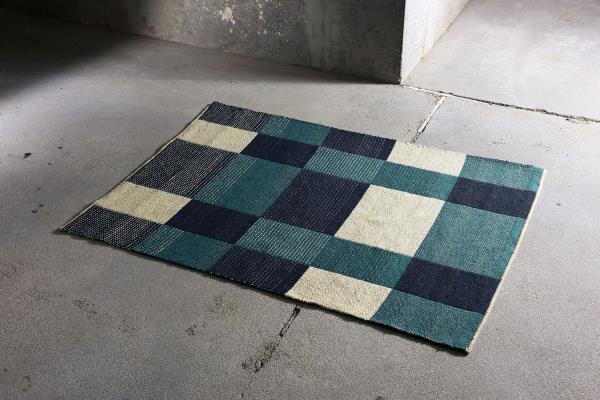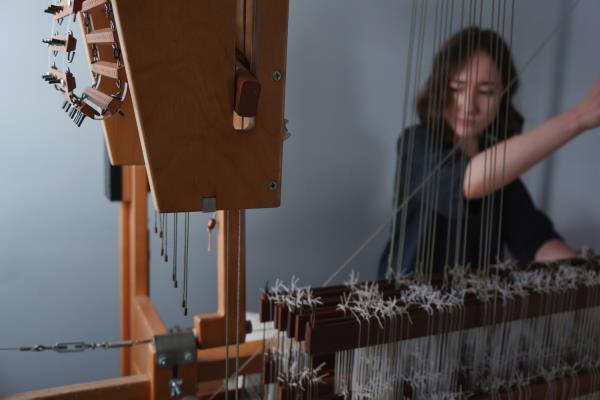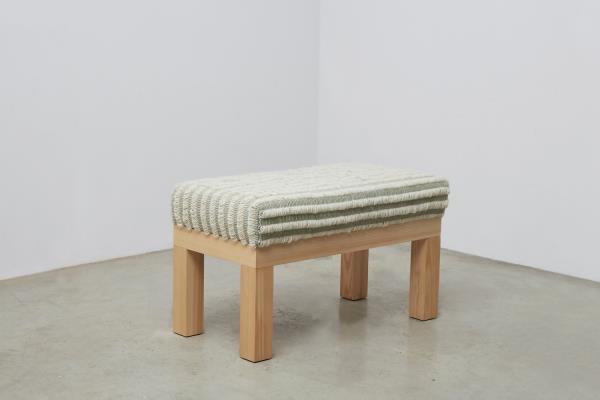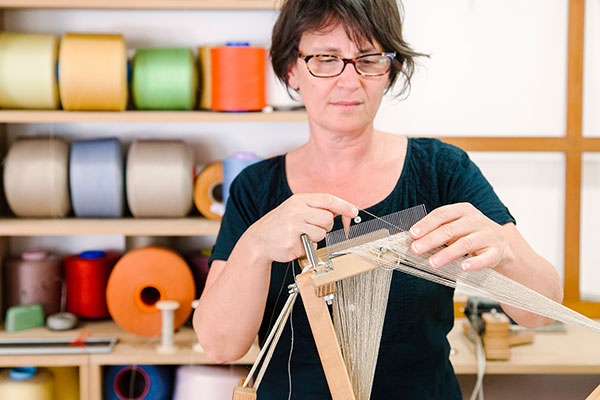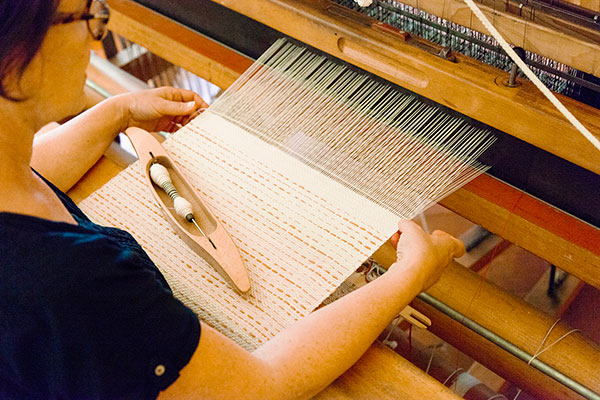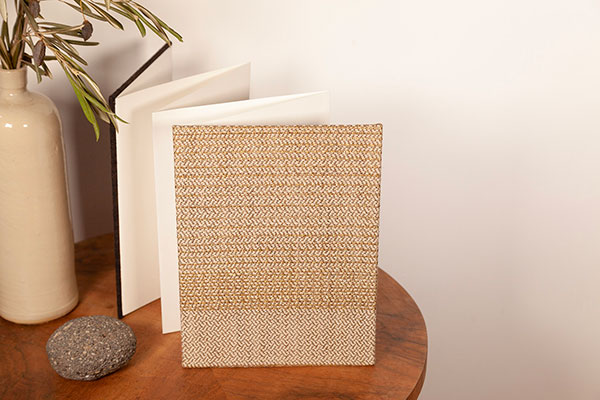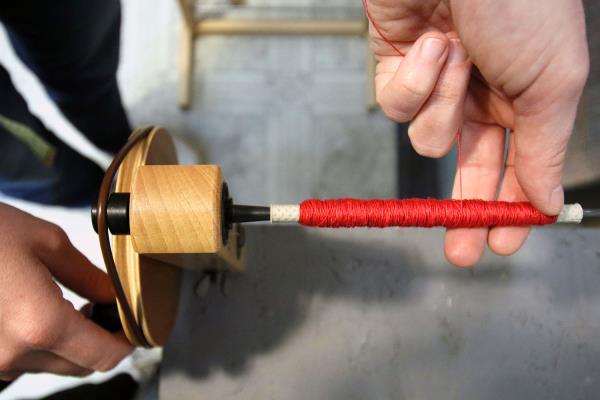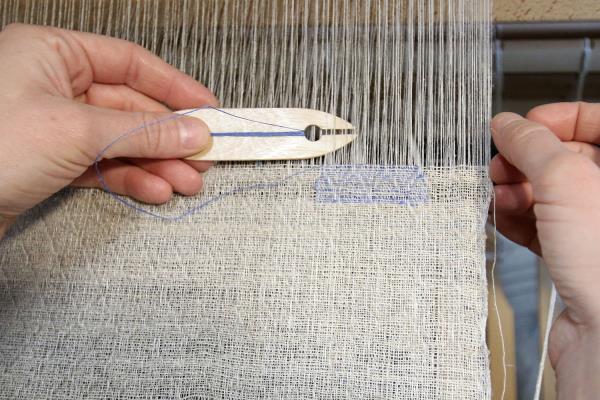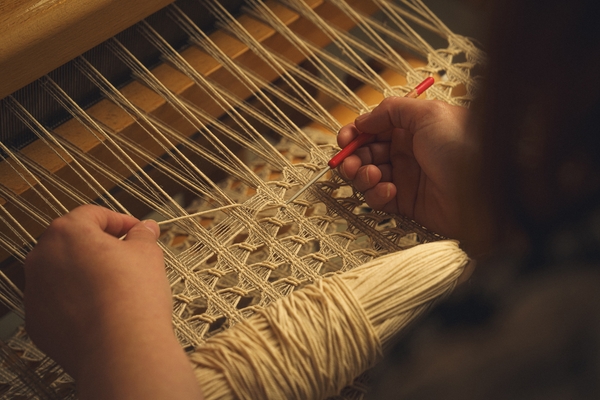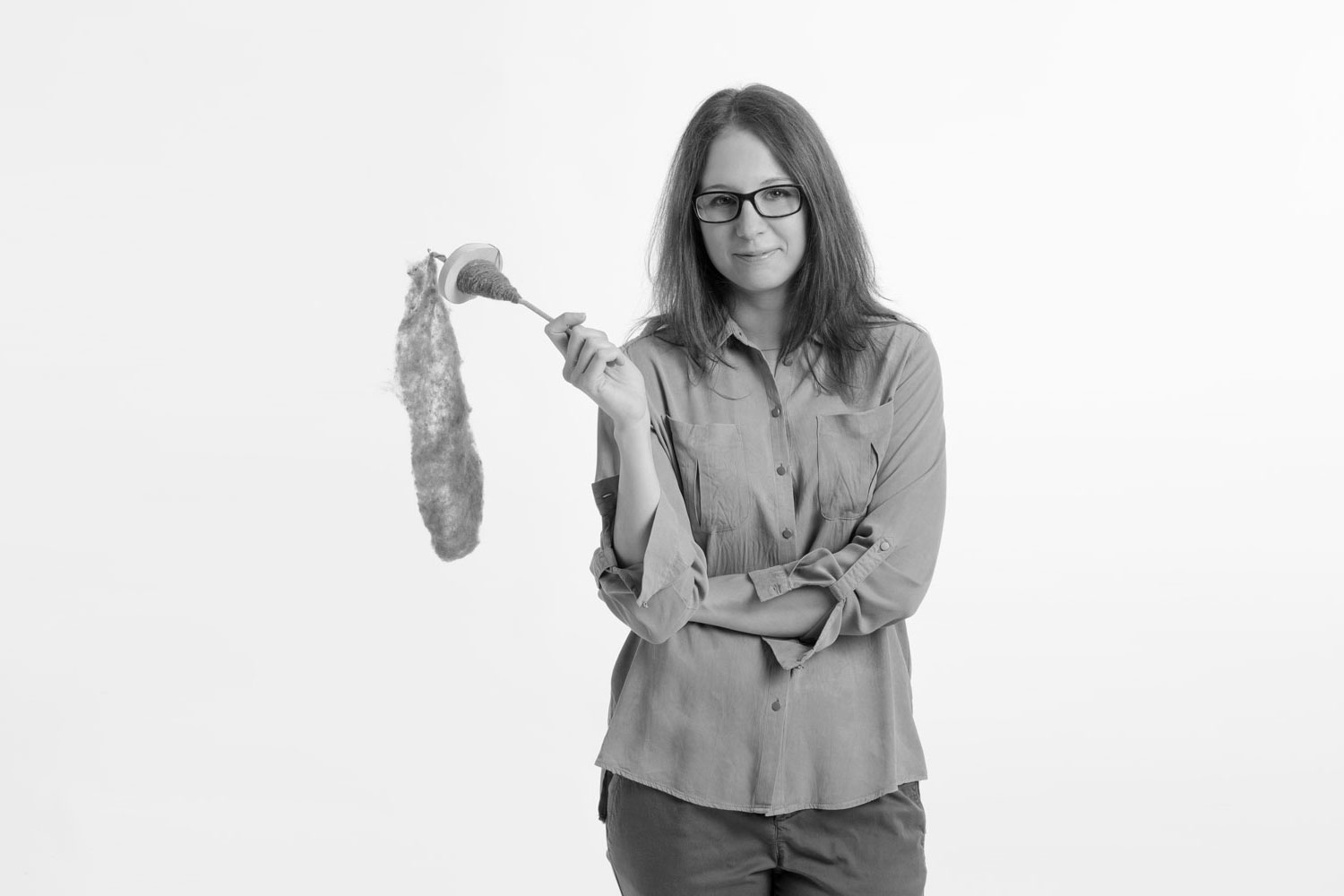

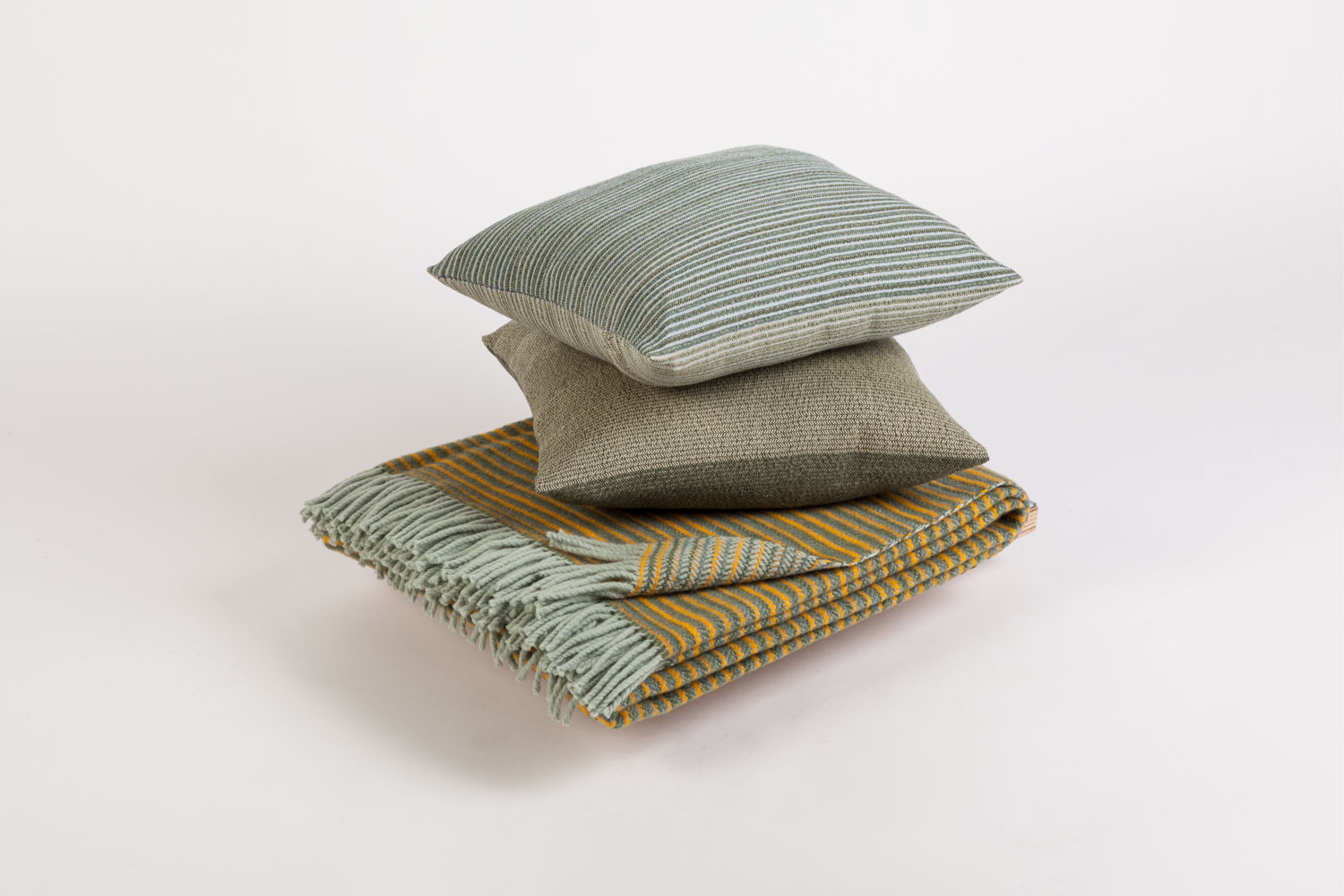
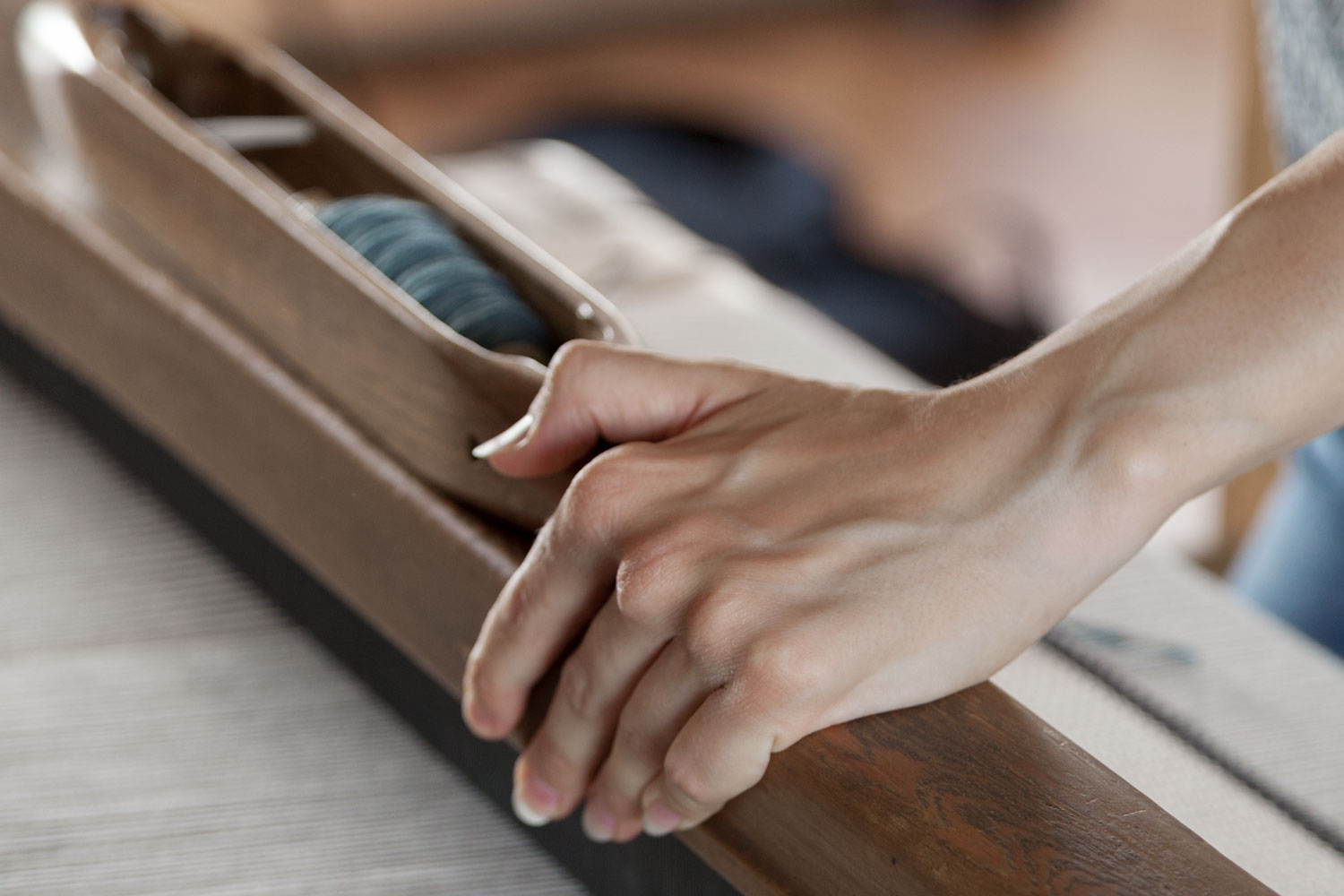




A colourful weaver
- Krisztina specialises in dobby weaving
- She produces various home furnishing textiles
- Her biggest commission was for a hotel in Budapest
As a child, Krisztina Vándor became acquainted with weaving at the summer art camps she spent with her grandmother. Although she liked all forms of design and crafts, she was immediately enthralled by the meticulousness of different weaving techniques, so she went on to study weaving at the Moholy-Nagy University of Art and Design. She works primarily with dobby weaving: she doesn’t weave pictures, but repeat patterns, which later take shape as blankets, rugs and pillows. She often works with other manufacturers that allows her to combine different professional skills. She considers it very important to work exclusively from natural raw materials and with the highest quality yarns. Her precision and maximalism results in unique, high-quality pieces that have become extremely popular in recent years – only six months after she launched her own business in 2019, she opened her first shop in Budapest.
Interview
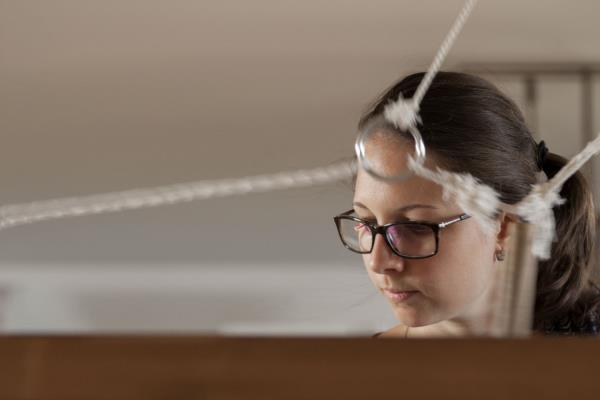
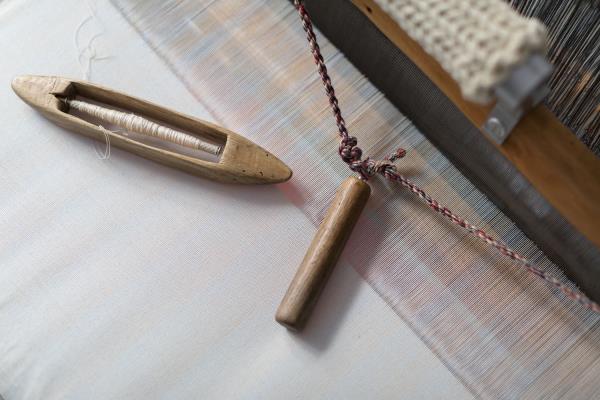
- Why dobby weaving?
- I am impressed with this technique. It is characterized by the repetition of a pattern, it is extremely meticulous and requires great care. With this technique, I can produce small series of high quality - I can produce up to dozens of pieces to the same, impeccably high standard.
- Do you also restore weaving machines?
- Yes. Lately, since it became widely known that I am trying to resuscitate this old technique, many have contacted me with old looms that no longer work. Now for example, we’re renovating a huge one that fills the entire room, and I am sure it will be a masterpiece when finished.
- How does tradition and innovation meet in your work?
- I am interested in the contrast of traditional techniques and the requirements of today. I use traditional methods and tools, but I use them differently – I use different colours and combinations, and of course I adapt my final pieces to contemporary times. Objects made with traditional technologies represent value.
- What is the hardest part of your job?
- It took me a long time to find the most suitable raw materials. I only use yarns that are ÖKO-TEX, REACH or bio certified, also in terms of their raw materials, production and dyeing. It is also very sad to see that the representatives of our profession are disappearing one by one.
Krisztina Vándor is an expert artisan: she began her career in 2009 and she started teaching in 2021
Where
Krisztina Vándor
Find Krisztina Vándor in the itinerary

